Ritenuta da alcuni sinonimo di Mammillaria sheldonii, dalla quale si distingue per modeste differenze: assenza di spine centrali e fiori più grandi con caratteristico pistillo di colore arancione scuro. Family: Cactaceae (Cactus Family) Mammillaria pseudoalamensis Backeb.
Scientific name: Mammillaria sheldonii (Britton & Rose) Boed.
First description: by Britton & Rose, The Cact. 4: 156 (1923).
Origin: Sonora and Chihuahua. Conservation status: Listed in CITES appendix 2. Synonyms: 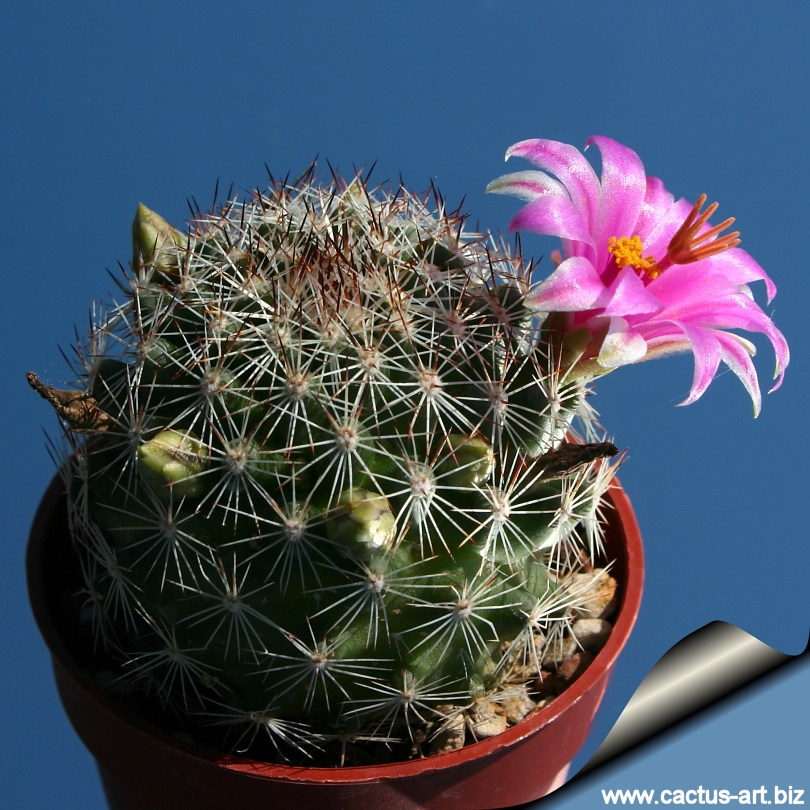 Mammillaria pseudoalamensis (= M. alamensis) Mammillaria pseudoalamensis (= M. alamensis)
Now often considered a synonym of Mammillaria sheldonii, to which it shows only modest differences: absence of central spines and larger flowers with a characteristic distinctive orange pistil.
|
| Description: Mammillaria sheldonii is undoubtedly a variable species, which has given rise to several names now ascribed to synonymy.
The M. pseudoalamensis (= M. alamensis) is nothing else than a variant recognisable for the absence of central spines, and larger flowers with a characteristic distinctive orange pistil.
Habit: It makes a cluster of basal stems.
Stem: spherical to slender-cylindrical, dull green, often becoming reddish, 3-6 cm wide, 8-15 cm tall (or more in cultivation)
Tubercles: Cylindrical four-sided basally, carinate, without latex, axils without wool but with an occasional few bristles. Tubercule arrangement: 8 - 13
Radial spines: The number of radial spines varies from as low as 9 (M. alamensis) to as many as 24, white, tipped brown, needle-like, about 6 to 8 mm long.
Central spines: 1 to 4 ( 0 in M. alamensis), the lower one elongated and either straight or hooked, 1 to 15.cm long, brownish, the upper part dark blackish brown.
Flowers: Large, wide funnel-form, diurnal, inodorous, light purplish-pink with a pinkish brown midstripe and paler margins, about 20 cm in diameter (up to 3,5 in M. alamensis). Stigmas are green (Orange in M. pseudoalamensis)
Blooming season (Europe): Spring, and flowers remain open for about three or four days.
Fruit: Club shaped, pale scarlet 25-30 mm long.
Seed: black. |
| .Cultivation: This plant blooms easily and needs lots of light. Use a pot with good drainage and a very porous mineral-based potting mix. Potted plants are quite wet-sensitive, especially in light of its small root system. Water sparingly during the growing season, let soil dry in between to prevent root rot, keep very dry in winter. Feed with a high potassium fertilizer in summer.
Usually it is recommended to over-winter this plant in a bright and warm greenhouse with at least 8-10° C , but it has proven to be quite frost resistant (if kept dry it is hardy as low as -7° C). A resting period in winter and strong light are necessary so that it can flower properly. Plants will offset readily, and dense clumps can be produced in a very few years.
Propagation: Through seeds and cuttings. |
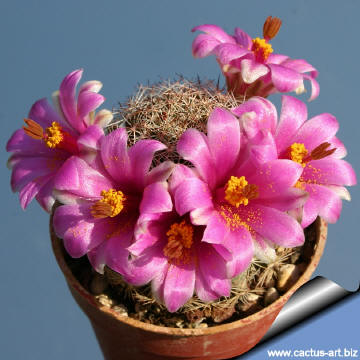
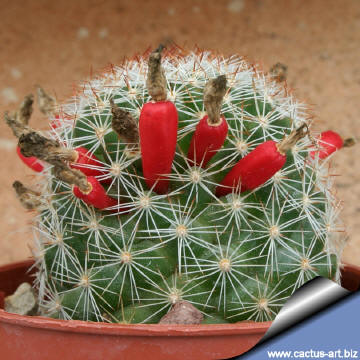
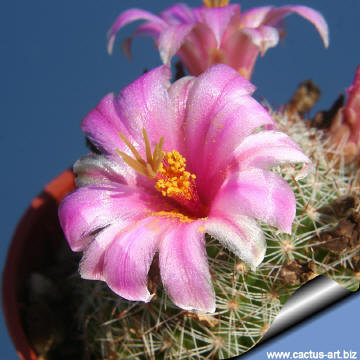
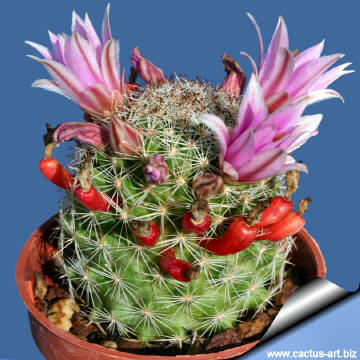
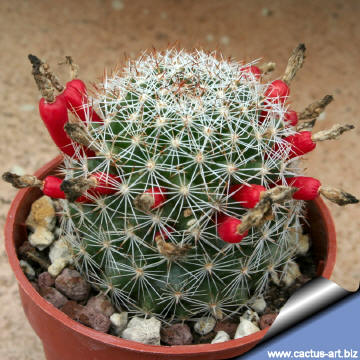
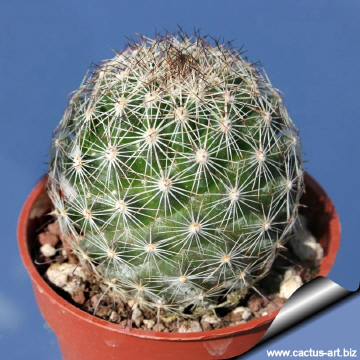

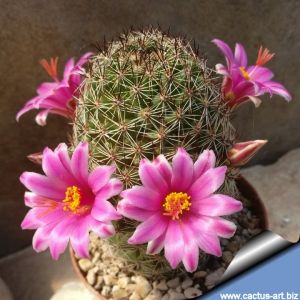
 Mammillaria pseudoalamensis (= M. alamensis)
Mammillaria pseudoalamensis (= M. alamensis)